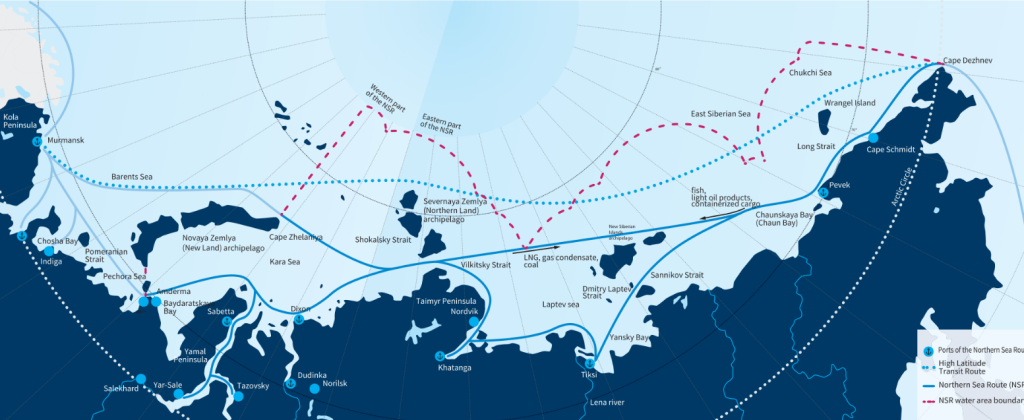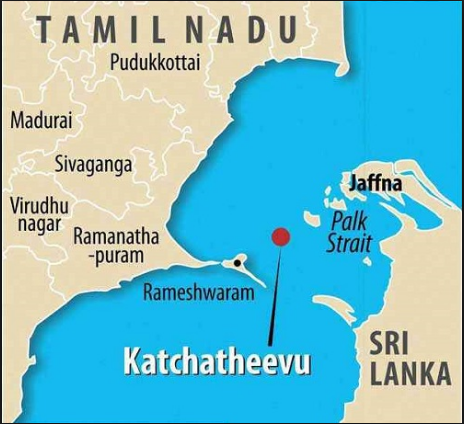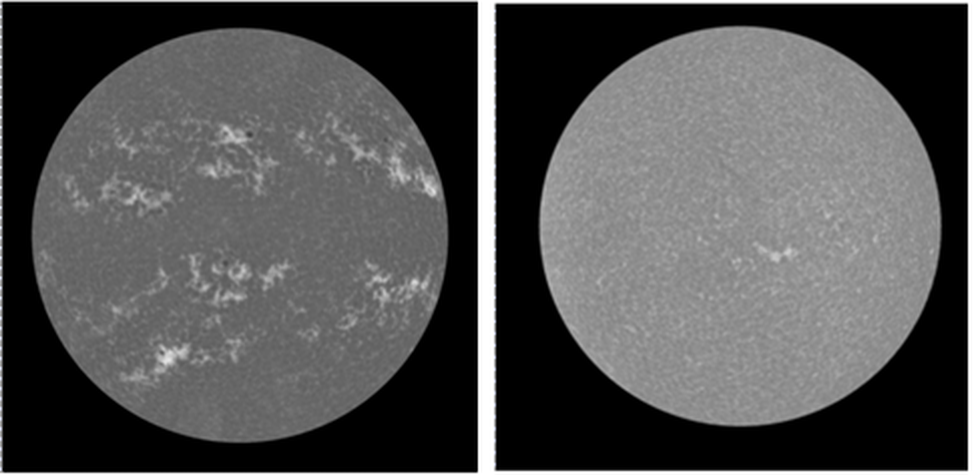CONTENTS
- Northern Sea Route
- National Curriculum Framework
- Katchatheevu Island
- S-400 Air Defence Missile System
- Eastern Equine Encephalitis (EEE) Virus
- Equal Contrast Technique (ECT)
Northern Sea Route
Context:
Murmansk, popularly called the capital of the Arctic region and the beginning point of the Northern Sea Route (NSR), is witnessing the rising trend of Indian involvement in cargo traffic. In the first seven months of 2023, India got the lion’s share with 35% of eight million tonnes of cargo handled by the Murmansk port, which is about 2,000 km northwest of Moscow. India has been showing greater interest regarding the NSR for a variety of reasons.

Relevance:
GS II: International Relations
Dimensions of the Article:
- Significance of the Arctic Region for India
- India’s Arctic Engagement Timeline
- Key Aspects of India’s Arctic Engagement
- Russia’s Efforts to Make the NSR Navigable
Significance of the Arctic Region for India:
- Climate Impact: The vulnerability of the Arctic to climate change can have repercussions on India’s climate, monsoon patterns, and weather systems, potentially affecting agriculture and water availability.
- Economic and Water Security: Changes in the Arctic can impact sea levels, which may affect coastal areas and ports, impacting India’s trade and maritime activities. Melting ice may also lead to changes in ocean currents, which could influence India’s fisheries and monsoon.
- Hydrocarbon Potential: The Arctic region holds significant untapped reserves of oil, gas, coal, zinc, and silver. Given India’s energy demands, accessing these resources could enhance energy security.
- Global Resource Competition: As major powers compete for access to Arctic resources and shipping routes, India’s interests in the region allow it to engage diplomatically and economically with other Arctic states.
- Sustainable Development: India’s Arctic policy aligns with UN Sustainable Development Goals, emphasizing responsible and sustainable development while considering the environment and local communities.
- Scientific Research: India can benefit from scientific research in the Arctic to better understand climate change and its impacts, leading to improved policymaking.
- Geopolitical Engagement: India’s involvement in Arctic Council discussions and initiatives enhances its diplomatic engagement and partnerships with Arctic states.
- Strengthening Ties: India’s interest in the Arctic provides opportunities to enhance bilateral and multilateral relations with Arctic countries, fostering cooperation on various global issues.
India’s Arctic Engagement Timeline:
- 1920: India’s engagement with the Arctic traces back to the signing of the Svalbard Treaty, which marked an early connection with the region.
- 2008: India established the Himadri Research Station in Ny-Ålesund, Svalbard, demonstrating its commitment to scientific research in the Arctic.
- 2014: India launched its first multi-sensor moored observatory, furthering its scientific capabilities in the region.
- 2016: The country inaugurated its northernmost atmospheric laboratory, showcasing its dedication to atmospheric research in the Arctic.
- Expeditions: Thirteen successful Arctic expeditions have been conducted by India, highlighting its active involvement in scientific exploration.
- May 2013: India, along with China and other countries, was granted observer status in the Arctic Council, indicating increased diplomatic engagement with Arctic affairs.
Key Aspects of India’s Arctic Engagement:
- Scientific Research: India’s engagement is primarily centered around scientific studies, including atmospheric, biological, marine, hydrological, and glaciological research.
- Research Station: The establishment of the Himadri Research Station showcases India’s commitment to on-site research and exploration in the Arctic.
- Observatories: Launching a multi-sensor moored observatory and a northernmost atmospheric laboratory demonstrates India’s advanced capabilities in monitoring and understanding the Arctic environment.
- Diplomatic Status: Gaining observer status in the Arctic Council highlights India’s efforts to engage diplomatically with Arctic countries and contribute to regional discussions.
The Northern Sea Route (NSR):
The Northern Sea Route (NSR) is the shortest shipping route for freight transportation between Europe and countries in the Asia-Pacific region. It stretches across four seas of the Arctic Ocean.
- Geographical Extent: The NSR covers a distance of approximately 5,600 kilometers. It begins at the boundary between the Barents and Kara seas (Kara Strait) and ends at the Bering Strait (Provideniya Bay).
- Distance Advantage: According to a paper published by the Arctic Institute in September 2011, the NSR offers potential distance savings of up to 50% compared to the longer shipping lanes traditionally used via the Suez or Panama canals.
- Significance: The NSR gained renewed attention due to the blockage of the Suez Canal in 2021, which disrupted the widely-used maritime route between Europe and Asia. This incident emphasized the importance of alternative shipping routes like the NSR
Russia’s Efforts to Make the NSR Navigable:
- Icebreaking Assistance: Due to the Arctic Ocean’s icebound nature for most of the year, icebreaking assistance is crucial for ensuring safe navigation along the Northern Sea Route (NSR). This assistance involves breaking through the ice to create a navigable path for ships.
- Nuclear-Powered Icebreaker Fleet: Russia possesses a unique advantage in making the NSR navigable—the world’s only fleet of nuclear-powered icebreakers. This fleet is managed by the Rosatom State Nuclear Energy Corporation, which oversees NSR infrastructure. This nuclear-powered fleet plays a vital role in breaking through the thick ice and ensuring ships can traverse the NSR.
- Historical Milestone: The NSR development took a significant step forward with the introduction of the world’s first nuclear icebreaker, named “Lenin,” in December 1959. This nuclear-powered icebreaker marked a new era in making the NSR more accessible and navigable. However, after three decades of operation, the “Lenin” was decommissioned.
- FSUE Atomflot: Currently, FSUE Atomflot, a subsidiary of Rosatom, operates the fleet of nuclear-powered icebreakers. The fleet consists of seven nuclear-powered icebreakers, and there is also a nuclear-powered container ship in operation.
- Future Expansion: Russia’s commitment to enhancing NSR navigability continues with plans for further expansion of the nuclear-powered icebreaker fleet. Three additional nuclear-powered icebreakers are expected to be commissioned between 2024 and 2027. This expansion aims to provide enhanced icebreaking support and ensure safe navigation along the route.
Driving Factors for India’s Participation in NSR Development:
India’s interest in participating in the development of the Northern Sea Route (NSR) is driven by several key factors:
Growth in Cargo Traffic:
- The NSR has witnessed a significant growth in cargo traffic, with a growth rate of around 73% during 2018-2022.
- This growth trend indicates the route’s increasing importance as a maritime trade corridor. In the past year, the volume of cargo traffic along the NSR reached 34.117 million tonnes.
Energy Resource Imports:
- India’s increasing import of essential energy resources like crude oil and coal from Russia plays a crucial role in its interest in the NSR.
- Rosatom, the infrastructure operator, highlights that the NSR’s reliable and safe transport capability can enable record supplies of energy resources to the Indian economy.
Strategic Geographical Position:
- India’s strategic geographical location and its reliance on sea transportation for trade make the NSR’s development as a transit route of particular significance.
- The NSR’s potential as a shorter route between Europe and the Asia-Pacific region aligns well with India’s trade routes.
Chennai-Vladivostok Maritime Corridor (CVMC):
- The CVMC project, initiated through a memorandum of intent between India and Russia in September 2019, is a key driver.
- This corridor aims to establish an international container transit route through the NSR. The 10,500 km-long CVMC, connecting the Sea of Japan, South China Sea, and Malacca Strait, offers a much shorter transport time of 12 days compared to the existing St. Petersburg-Mumbai route covering 16,000 km.
- This presents significant trade efficiency benefits.
Cargo Types:
- A study commissioned by the Chennai Port Trust identified that specific cargoes, such as coking coal used by steel companies, crude oil, Liquified Natural Gas (LNG), and fertilisers, could be imported from Russia to India through the CVMC. This aligns with India’s industrial and energy needs.
Collective Influence Considerations:
- Experts are discussing the possibility of China and Russia gaining collective influence over the NSR due to their roles in its development.
- This potential geopolitical aspect adds to India’s interest in the region’s affairs.
Future Outlook:
The development and activities related to the Northern Sea Route (NSR) and its collaboration with India hold several significant aspects in the coming years:
NSR Development Plan:
- The Russian government’s approved NSR development plan until 2035 outlines ambitious cargo traffic targets. By 2024, the goal is to achieve 80 million tonnes of cargo traffic, which is expected to increase to 150 million tonnes by the year 2030.
- This plan reflects Russia’s commitment to enhancing the NSR’s capacity and efficiency for maritime trade.
Economic Sanctions:
- The approval of the NSR development plan took place against the backdrop of economic sanctions imposed by Western countries against Russia.
- Despite these challenges, Russia remains focused on advancing its strategic goals for the NSR’s development.
Russian-Indian Collaboration:
- In March 2023, a Russian delegation engaged with the Indian business community in New Delhi and Mumbai to discuss NSR development.
- The discussions centered around providing essential components to ensure year-round operation of the route. Rosatom’s interest in involving Indian companies in NSR-related projects demonstrates the potential for collaboration between the two countries in this significant endeavor.
CVMC Workshop:
- The Chennai-Vladivostok Maritime Corridor (CVMC) project, which holds promise for shorter and more efficient maritime trade between India and Russia through the NSR, is set to advance.
- A workshop involving stakeholders from both countries is scheduled for the second half of October.
- This workshop indicates the continued progress in planning and implementing the CVMC, which could reshape trade dynamics.
-Source: The Hindu
National Curriculum Framework
Context:
Recently, the final National Curriculum Framework (NCF) was released by the National Council of Educational Research and Training (NCERT), leading to significant reforms in the education system, led by the principles of the National Education Policy (NEP) 2020.
Relevance:
GS II: Education
Dimensions of the Article:
- Key Highlights of the National Curriculum Framework (NCF)
- What is NCF?
- National Education Policy 2020
Key Highlights of the National Curriculum Framework (NCF):
Language Learning:
- Classes 9 and 10: Learn three languages, with at least two being native Indian languages.
- Classes 11 and 12: Study two languages, including one of Indian origin.
- Aim to achieve a “literary level” of linguistic capacity in at least one Indian language.
Board Exams:
- Students can take Board exams on at least two occasions in a school year.
- Only the best score among attempts will be retained.
Alignment with NEP 2020:
- NCF follows NEP 2020 guidelines, guiding new CBSE textbooks from Grades 3 to 12.
- Textbooks aligned with 21st-century requirements, balancing present context and future orientation.
Mandatory Subjects:
- Classes 9 and 10: Seven mandatory subjects.
- Classes 11 and 12: Six mandatory subjects.
Subject Grouping:
- Three subject groups: art education, physical education, and vocational education; Social Science, Humanities, and interdisciplinary areas; Science, Mathematics, and computational thinking.
Flexibility and Choice:
- Redesigned “Secondary Stage” offers more flexibility and choice.
- No strict separation between academic and vocational subjects.
- Students can choose varied subject combinations for School Leaving Certificates.
Environmental Awareness:
- Emphasis on environmental awareness and sustainability.
- Environmental Education integrated across all schooling stages.
- Separate area of study for environmental education in Secondary Stage.
Content Distribution for Social Science Curriculum (Classes 6-8):
- 20% content from local level.
- 30% content from regional level.
- 30% content from national level.
- 20% content from global level.
What is NCF?
- The NCF, which was last revised in 2005 under the Congress-led UPA government, is a key document based on which textbooks are prepared.
- So the current set of NCERT textbooks, barring the deletions, are all based on the NCF 2005.
- Before 2005, the NCF was revised thrice, including once under the NDA government led by Atal Bihari Vajpayee.
- Under the latest round of revision, which is underway since September 2021, draft frameworks on early childhood care and education and school education have already been prepared, while work on teacher and adult education is underway.
- Apart from textbooks, the NCF, after its adoption by the CBSE and other state boards, will also restructure various other aspects of the classroom, including choice of subjects, pattern of teaching, and assessment.
National Education Policy 2020:
- The National Education Policy (NEP) 2020 is a comprehensive educational reform framework approved in 2020 in India.
- It aims to bring substantial changes to the education system by adopting a holistic and multidisciplinary approach.
Key Features:
- Universalization of Education: Ensures education access from preschool to secondary level for all.
- New Pedagogical and Curricular Structure: Based on cognitive and socio-emotional development of students.
- Foundational Literacy and Numeracy: Focuses on developing these skills in primary education.
- Research and Development: Emphasizes enhancing research activities in education.

-Source: The Hindu
Katchatheevu Island
Context:
Recently, the Tamil Nadu Chief Minister revived the debate over the Katchatheevu, a longstanding point of contention between India and Sri Lanka, particularly with regard to fishing rights and sovereignty over the uninhabited island.

Relevance:
Places in News
Dimensions of the Article:
- Highlights of the Katchatheevu Issue
Highlights of the Katchatheevu Issue:
- Location: Katchatheevu is a small uninhabited island in the Palk Strait, situated about 14 nautical miles off Rameswaram, India, and belongs to Sri Lanka.
- Agreement of 1974: In 1974, Prime Ministers Indira Gandhi of India and Sirima R.D. Bandaranaike of Sri Lanka signed an agreement recognizing Katchatheevu as part of Sri Lanka’s territory, leading to a change of ownership.
- Fishing and Pilgrimage: The agreement allowed Indian fishermen to fish near the island and granted access for Indian pilgrims to a Catholic shrine located there.
- Historical Fishing: Both Indian and Sri Lankan fisherfolk historically used Katchatheevu for fishing, acknowledged in the 1974 agreement and supplemented by a 1976 agreement that defined maritime boundaries and exclusive economic zones.
- Indian Government’s Stand: In 2013, the Indian government stated that no Indian territory was ceded, framing the issue as a dispute between British India and Ceylon (now Sri Lanka) resolved through the 1974 and 1976 agreements.
- Territorial Claim: The Indian government maintains that Katchatheevu lies on the Sri Lankan side of the India-Sri Lanka International Maritime Boundary Line.
- Opposition and Debates: The transfer of Katchatheevu sparked opposition and debates in the Indian Parliament, with leaders from Tamil Nadu demanding its retrieval.
- Evolution of Demand: The demand for retrieval has evolved over the years, with suggestions of a “lease in perpetuity” for the island being discussed.
-Source: The Hindu
S-400 Air Defence Missile System
Context:
Ukraine recently said it destroyed a Russian S-400 anti-aircraft system on the Crimean peninsula, which Russia annexed in 2014.
Relevance:
GS III: Defence
Dimensions of the Article:
- About S-400 Air Defence Missile System
About S-400 Air Defence Missile System:
- The S-400 Air Defence Missile System is a highly advanced mobile surface-to-air missile system developed by the Almaz Central Design Bureau of Russia.
- It is known as the S-400 Triumf in Russia and NATO refers to it as the SA-21 Growler.
Here are its key features:
- Functionality: The S-400 is designed to provide air defense against a wide range of threats, including aircraft, ballistic missiles, and airborne early warning and control (AWACS) aircraft.
- Simultaneous Tracking: One of its remarkable features is its ability to simultaneously track and engage multiple incoming targets, thanks to its advanced radar and control systems.
- Development and Deployment: The system entered service in April 2007, with the first combat deployment in August 2007. It represents a significant advancement in air defense technology.
- India’s Acquisition: In October 2018, India signed a substantial deal worth $5.5 billion with Russia to acquire five S-400 systems, aiming to enhance its air defense capabilities.
- Missile Capabilities: The S-400 system is equipped with multiple missile types:
- Long-range: It can engage targets up to 400 km and 250 km away.
- Medium-range: It can target threats at distances of 120 km.
- Short-range: It can engage incoming objects within 40 km.
- Simultaneous Engagement: The system is capable of simultaneously engaging up to 36 different targets, making it highly effective in complex and dense threat environments.
- Radar and Control Systems: The S-400 is a complex of radars, control systems, and various types of missiles. Its radar can detect and track targets at long distances, providing early warnings and target identification.
- Automated System: The system is highly automated. Once a target is detected and identified, it is handed over to manned anti-aircraft missile systems within the complex for launching counterattacks.
-Source: Times of India
Eastern Equine Encephalitis (EEE) Virus
Context:
A rare mosquito-borne virus, Eastern equine encephalitis, was recently reported in the US states of Alabama and New York.
Relevance:
GS II: Health
Dimensions of the Article:
- Eastern Equine Encephalitis (EEE) Virus
- Symptoms
- Treatment
Eastern Equine Encephalitis (EEE) Virus:
- EEE is a rare and severe infection that causes inflammation of the brain (encephalitis).
- Named after its initial discovery in horses (equines) during the 1830s.
- Transmitted by mosquitoes carrying the EEE virus (EEEV).
- Can impact brain and nerve functions, often leading to serious and fatal outcomes.
Transmission:
- Spread through the bite of infected mosquitoes.
- Mosquitoes become carriers after feeding on animals infected with EEEV.
- Affects a wide range of animals including mammals, birds, reptiles, and amphibians.
Fatality Rate:
- Approximately 30% of individuals bitten by EEE-infected mosquitoes develop encephalitis and die from the infection.
Contagiousness:
- Not contagious between humans or between animals and humans.
- Virus transmission occurs exclusively through mosquito bites.
Symptoms:
- Severity varies; many remain asymptomatic.
- Symptoms can include fever, headache, vomiting, diarrhea, and neurological issues.
- Neurological symptoms like encephalitis can lead to seizures, coma, and sometimes death.
- Infants and the elderly are more vulnerable to severe cases.
Treatment:
- No human vaccine available for EEE.
- No specific antiviral drugs for EEE treatment.
- Supportive care focuses on managing symptoms.
- Severe cases may require hospitalization and intensive care.
- Preventive measures, including mosquito avoidance, are crucial due to lack of specific medical interventions.
-Source: Hindustan Times
Equal Contrast Technique (ECT)
Context:
Recently, scientists developed a new methodology, called Equal Contrast Technique (ECT), to analyse Sun images in white light, which can help prevent temporal and latitudinal variations in observations related to instrument and sky conditions.

Relevance:
GS III: Science and Technology
Dimensions of the Article:
- Key Points
- Significance
- Magnetogram
Key Points:
- The Sun exhibits numerous regions of weak magnetic fields that change over time.
- Magnetograms and Ca-K line images are used to study these regions due to a strong correlation between magnetic field and Ca-K line intensity.
- Magneto-grams have limited availability and instrument characteristics change over time.
- Ca-K line images have long-term availability at Kodaikanal Observatory (KO) and other observatories like Mount Wilson Observatory (MWO).
- Researchers used Kodaikanal data to establish a strong correlation between derived plage area (bright region in the sun’s chromosphere) from Ca-K images and sunspot numbers. This correlation is evident even on a daily basis over about 100 years.
Significance:
- Accurate analysis of historical Ca-K image time series provides reliable insight into sun variations and their impact on Earth’s climate.
- Understanding sun dynamics, solar cycle variations, convection zone dynamo processes, and resulting long-term climatic variations on Earth is facilitated.
Magnetogram
- A magnetogram is an image captured by an instrument that is capable of detecting and depicting the strength and distribution of magnetic fields on the Sun’s surface.
- In a magnetogram, different shades of gray are used to represent varying levels of magnetic strength.
- The absence of a magnetic field is often represented by a neutral shade of gray.
- Black and white areas on a magnetogram indicate regions where the magnetic field is particularly strong or weak, respectively.
- This visualization technique helps scientists study the complex magnetic activity and patterns on the Sun, which play a crucial role in various solar phenomena and processes.
-Source: The Hindu, PIB




